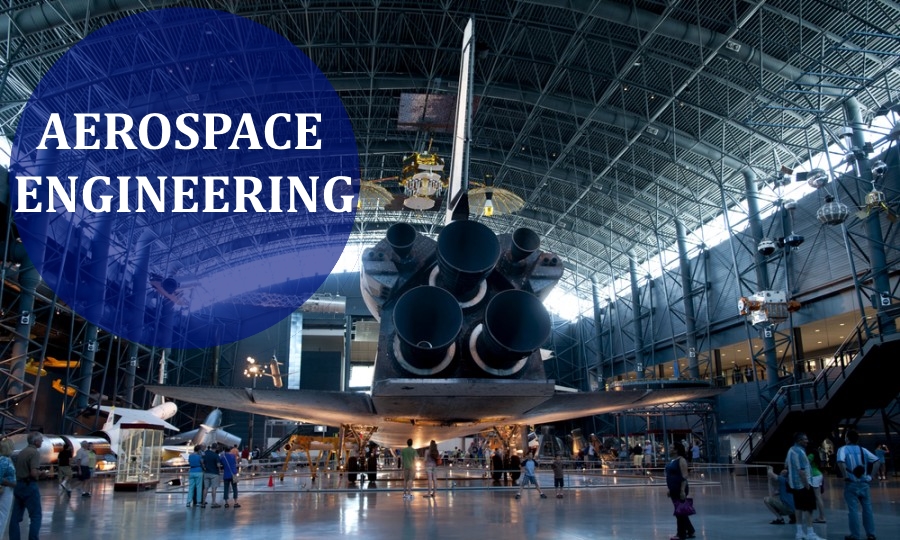Aerospace Engineering: Eligibility, Career Prospects and Job Role

Aerospace science is the study of newer and better ways to fulfil one of humanity's oldest dreams: the dream of flight. It is the primary field of engineering concerned with the development of aircraft and spacecraft and has two major and overlapping branches: Aeronautical and Astronautical. Aeronautical Engineering is a study about Aircraft and its components and astronautical engineering is specifically about spacecraft and related technologies. According to U.S. Bureau of labor statistics, aeronautical engineers are primarily involved in designing aircraft that fly within Earth's atmosphere, while astronautical engineers work with the science and technology of spacecraft that fly outside Earth's atmosphere. On the other hand, Aerospace Engineers design spacecraft, aircraft, missiles, and weapons systems. In addition, they are also responsible for assembling, maintaining and ensuring they function properly at all times. Some specialize in other important equipment like air guidance systems, guidance control systems, propulsions, and more.
Eligibility
Considering Entry-level aerospace engineers usually need a bachelor's degree, High school students interested in studying aerospace engineering should take courses in chemistry, physics, and math, including algebra, trigonometry, and calculus to meet the minimum of 60 percent marks in HSC (55 percent marks for SC/ST) in Science stream (Physics, Chemistry, Maths). The course curriculum for Aerospace Engineering includes Aerodynamics, Aerospace Propulsion, Aerospace Structural Mechanics, Aircraft Design, Aircraft Propulsion, Flight Mechanics, Incompressible Fluid Mechanics, Spaceflight Mechanics, Thermodynamics and Propulsion. To join aerospace as an engineer or scientist, you will have to study the subject for four to seven years after high school.
Career Prospects and Job Role
Aerospace Engineering branch covers a wide range of topics including computer application, structures, mathematics, physics, drafting, electricity, robotics, aeronautics, etc. Students of aerospace engineering apply concepts which can encompass maths, science, and technology to the creation of aircraft and accompanying equipment. Specialisms include aerodynamics, avionics, and propulsion and systems integration.
Job opportunities for Aerospace engineers are available in Airlines, Air Force, Corporate Research Companies, Defence Ministry, Helicopter Companies, Aviation Companies, NASA and many others.Top Recruiters that hire Aerospace Engineers are: Indian Space Research Organisations (ISRO), Hindustan Aeronautical Limited (HAL), National Aerospace Laboratories (NAL), Defence Research and Development Organisation (DRDO). Aerospace engineers design, test, and supervise the manufacture of aircraft, spacecraft, and missiles. They develop new technologies for use in aviation, defense systems, and space exploration, often specializing in areas such as structural design, guidance, navigation and control, instrumentation and communication, and production methods. The work profile or duties of an Aerospace Engineer typically involves research, design, construction and maintenance of aircrafts and space crafts. An Aerospace Engineer is expected to undertake following job roles:
1. Researching ways to make fuel-efficient parts and engines
2. Carrying out ground-level flight testing
3. Collecting and analysing test data
4. Estimating project costs and timescales.
In India, Aerospace Engineering is one of the niche engineering branches among students as it offers lucrative and a fulfilling career. The salary range for a newly graduated aerospace engineer with a bachelor's degree is $52,572 to $73,535. Employment of aerospace engineers is projected to grow 6 percent from 2016 to 2026, about as fast as the average for all occupations. Aircraft are being redesigned to cause less noise pollution and have better fuel efficiency, which will help sustain demand for research and development. There are many opportunities for highly qualified applicants, particularly those who have kept abreast of the latest developments in technology. Aerospace engineers who know how to use collaborative engineering tools and processes and are familiar with modelling, simulation, and robotics have good opportunities.

